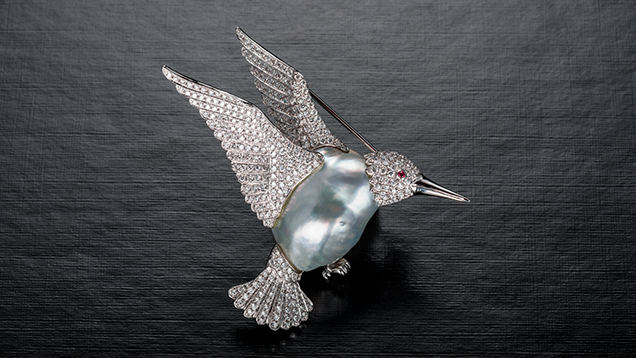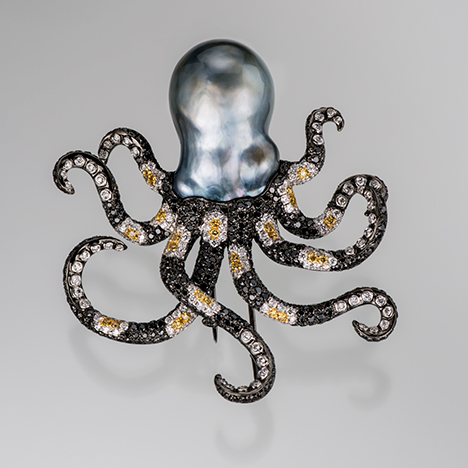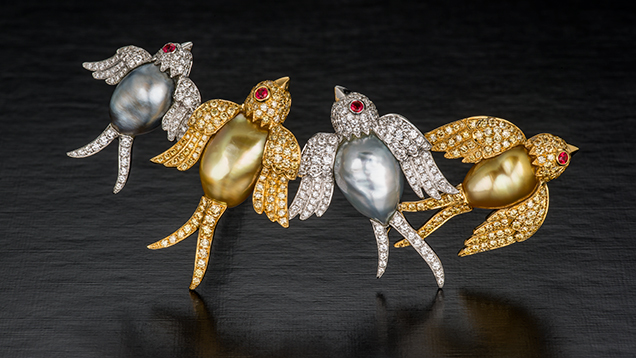Baroque Pearls

Several vendors at this year’s Tucson gem shows, including AGTA and GJX, carried baroque pearls in an assortment of colors, sizes, and qualities. A common request from buyers was for pairs in larger sizes. The increased availability of less-expensive, quickly produced freshwater baroque cultured pearls from China in a wide range of sizes has had a noticeable impact on the market, as more designers are experimenting with them and more consumers are seeking them out. At the same time, sizable high-quality baroque pearls from the Philippines and Australia, particularly golden pearls, are becoming harder to find, as noted by AGTA exhibitor Ron Greenidge (Emiko Pearls International, Bellevue, Washington).
Emiko Pearls, founded in 1980, specializes in large and unusual classic and baroque pearls of gem and near-gem quality, namely South Sea, Tahitian, and “keshi” cultured pearls in golden, silver blue, gray, and pink hues. Greenidge showed us several examples of handmade jewelry that maximized the potential of exceptional baroque cultured pearls, particularly “jumbo” baroques in the 20–22 mm range. In response to market conditions, Emiko has transitioned over the past decade from offering loose pearls to almost exclusively producing finished goods.

Greenidge’s love of jewelry, paired with the increasing scarcity of high-quality larger pearls, has led the company to make one-of-a-kind pieces that showcase the uniqueness of individual pearls. Instead of finding pearls to place into existing jewelry, the firm designs jewelry around the pearl. The results are exquisite with whimsical and natural qualities, as seen in their hummingbird and octopus brooches (figures 1 and 2). Each piece is hand-welded from 18K gold, with diamonds and other precious stones added. The pieces, which take several months to create, are sought by clients in Asia and Europe (particularly China, Thailand, and Italy). High-end stores with one or two locations are the primary buyers, as Emiko does not mass-produce any of its designs. The swallow pin in figure 3, complete with forked tails, uses multiple keshi cultured pearls in two tones with matching diamond and gold colors.

As the consumption of pearls, including large baroque cultured material, increases with greater availability of lower-priced goods, expect to see other suppliers of high-quality pearls strive to differentiate themselves as Emiko has done.



